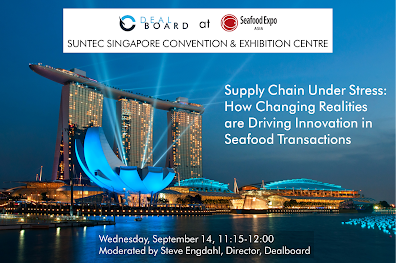Quiz time: What do these three real-life scenarios from 2021
have in common?
1. This
is a great time to be in the seafood industry. Seafood consumption is
strong, powered by the continuation of the prepare-at-home trend triggered
by the pandemic, and by post-pandemic resumption of restaurant and
food-and-beverage business. And, depending on the sector, retail prices
have soared, in some cases 50% - 60% within the calendar year and 140%
year over year.
2. This
is a terrible time to be in the seafood industry. If you produce, process
or ship seafood, you’re struggling with labor shortages which make it
challenging to deliver on your own commitments. And with ships sitting
awaiting access to bottlenecked ports and continued challenges with closed
borders, you’re concerned about the ability of your traditional suppliers
to deliver on their commitments to you.
3. Completely
unrelated to the pandemic, US Customs and Border Protection decided to
take action to restrict a decade-old process used to ship whitefish from
Alaska to the US east coast (if you’re not familiar with this one, it’s an
entertaining look at how the lure of opportunity drives ingenuity… an excellent
and informative podcast from Intrafish is here,
which will enable you to see the humor and audacity in this video.)
Answer:
All of these scenarios place pressure on seafood companies
to expand their global network of relationships. Our supply chain is still
broken. It’s exhibiting the symptoms of a COVID long-hauler, where it’s far
from recovered, and it is not clear how or when recovery will take place. There’s a
distinct need to increase supply to meet demand, to increase the number of
supplier sources in order to buffer the risk of supplier unpredictability, and
to build in flexibility to shift from one source to another as the regulatory
and geopolitical environment introduce constraints.
There is cause for optimism - while Delta variant flare-ups
are still occurring, and the true impact of Omicron is, as of this
writing, yet to be understood, in large part we’re on a path to recovery from
the pandemic. Many of us in the US just had a real Thanksgiving gathering with
family, something not possible a year ago. Companies are starting to return to
the office. We’re eating in restaurants more now.
Competitiveness – and survival – requires conscious action
to build new relationships, and platforms to effectively manage them and pursue
new business opportunities. Companies who do so rapidly will capitalize on the
market-driven demand opportunity, and will increase the flexibility and agility
of their sourcing relationships to buffer supplier and labor uncertainties.
Companies unable to do so will face idled facilities, margin pressure, and
declining revenue. It’s that simple.
Are you able to ride the wave of change? How are you
expanding your network of supplier/buyer relationships?


